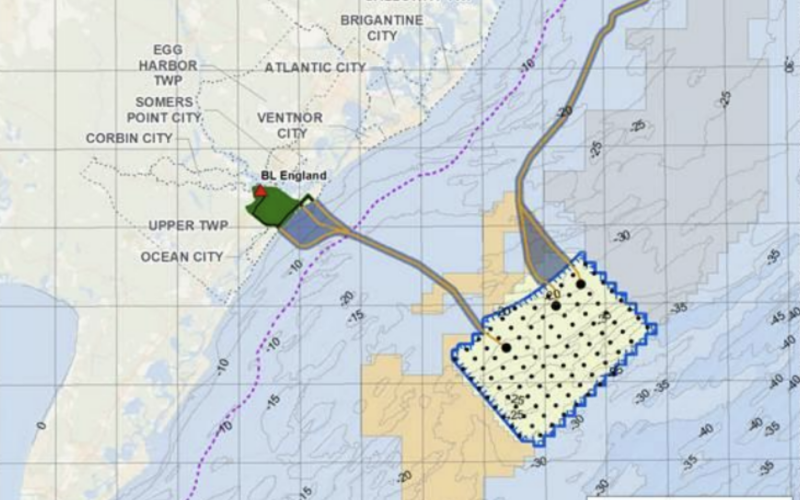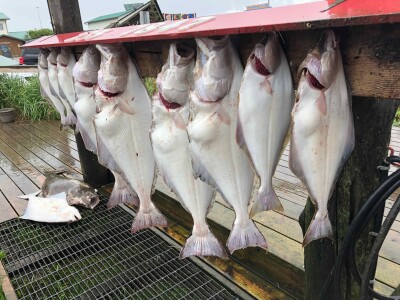Offshore wind developer Ørsted said it is pulling out of its Ocean Wind 1 and Ocean Wind 2 projects off New Jersey, citing escalated financial difficulties and supply chain issues.
“Macroeconomic factors have changed dramatically over a short period of time, with high inflation, rising interest rates, and supply chain bottlenecks impacting our long-term capital investments,” said David Hardy, group executive vi ce president and CEO Americas at Ørsted, shortly after the company’s board of directors announced the decision at the start of an earnings call in Denmark.
“As a result, we have no choice but to cease development of Ocean Wind 1 and Ocean Wind 2. We are extremely disappointed to have to take this decision, particularly because New Jersey is poised to be a U.S. and global hub for offshore wind energy.”
It’s a major blow to U.S. renewable energy ambitions, coming hours after the Biden administration announced final approval of the Coastal Virginia Offshore Wind project, touting it as the next milestone following Ocean Wind 1.
Ørsted’s New Jersey withdrawal could have implications for how the U.S. industry evolves its port hubs too. Virginia state officials see the CVOW as opening the Hampton Roads region as a development hub, while New Jersey invested heavily in its Delaware Bay and river shores as a logistics center.
“We are extremely disappointed to have to take this decision, particularly because New Jersey is poised to be a U.S. and global hub for offshore wind energy,” said Hardy of Ørsted. “I want to thank Governor (Phil) Murphy and NJ state and local leaders who helped support these projects and continue to lead the region in developing American renewable energy and jobs.”
"Today’s decision by Ørsted to abandon its commitments to New Jersey is outrageous and calls into question the company’s credibility and competence. I have directed my Administration to take all necessary steps to ensure that Orsted fully honors its obligations," Murphy said in a brief statement on social media Tuesday night.
Local officials in Cape May County, N.J., hailed the news. Local governments and community groups have been fighting Ørsted, state officials and federal agencies over permits and approvals for Ocean Wind 1.
“This is a great day for the people and businesses of Cape May County,” said Len Desiderio, director of the Cape May County Board of Commissioners. “The massive, reckless experiment known as Ocean Wind One has been stopped and Ocean Wind Two abandoned. There were many who consistently told us that we were wasting our time, that there was nothing we could do about the project being built.
“Orsted has walked away from Ocean Wind One, but we are not walking away from this fight. We intend to redouble our efforts to ensure that our horizon remains free of massive offshore industrialization.”
Ørsted said its decision came amid an ongoing review of its U.S. offshore wind portfolio. Among those steps was the company board’s decision to take a financial investment decision on Revolution Wind, a 50/50 joint venture planned off southern New England with Eversource.
“With our final investment decision, we’re solidifying our commitment to building our second commercial-scale offshore wind farm in the United States, helping to deliver more American energy and American jobs,” said Hardy. “I want to thank our Ørsted employees who helped achieve FID for Revolution, as well as our team at South Fork Wind building New York’s first offshore wind farm, our New Jersey team that worked tirelessly to advance these projects, and our land-based team delivering across our portfolio. As we manage and deliver in a challenging market, our team of experts sets itself apart.”
In a lengthy statement late Tuesday Ørsted included a summary of its offshore wind ventures in U.S. waters:
Ocean Wind 1 and 2 (1100MW project and 1148 MW projects)
Ørsted has decided to cease the development of Ocean Wind 1 and 2. The projects have experienced significant impacts from macroeconomic factors, including high inflation, rising interest rates and supply chain constraints, particularly a vessel delay on Ocean Wind 1 that considerably impacted project timing. The company intends to retain the seabed lease area and consider the best options as part of the ongoing portfolio review.
Revolution Wind (704MW project in a JV with Eversource)
Building on its commitment to renewable energy in the U.S., Ørsted agreed today to take FID on Revolution Wind. Onshore construction has started, and offshore construction will start in 2024, with the project expected to be completed in 2025. Revolution Wind will create thousands of direct and indirect jobs as well as permanent operations and maintenance jobs across Connecticut and Rhode Island. Once complete, the project will deliver 400 MW of clean energy to Rhode Island and 304 MW of clean energy to Connecticut, combining to power more than 350,000 homes.
South Fork Wind (130MW project in a JV with Eversource)
South Fork Wind continues its construction to progress toward operations, with the offshore substation and all the turbine foundations installed and onshore construction complete. The loading of components for the first turbine was completed on October 30 and plans are underway for sail away to install the first turbine, with all 12 expected to be installed by the end of 2023 or early 2024.
Sunrise Wind (880MW project in a JV with Eversource)
The company welcomes NYSERDA’s request for information (RFI) for an accelerated solicitation for offshore wind capacity, which could provide an opportunity to rebid Sunrise Wind. It is encouraging to see the state advance a potential rapid process as it recognizes the urgent action needed to keep New York’s offshore wind ambitions on track for job creation and climate goals. This is especially important because keeping early projects like Sunrise Wind on current timelines is linked to the success of subsequent projects that will rely on infrastructure, manufacturing and trained workers enabled by these projects. This RFI process could help address macroeconomic factors impacting the project, including a price level that reflects current component and financing costs. The company will assess the conditions of the RFP and determine whether to proceed with a rebid or not.
Skipjack Wind
Ørsted continues to reconfigure this project and expects to have more clarity on its path forward in the coming months as discussions continue with stakeholders in Maryland.
“We remain committed to the U.S. renewable energy market, building clean power that will create jobs across technologies and states from the Northeast to Texas,” Hardy said. “Offshore wind energy remains an integral solution to helping the U.S. meet its clean energy ambitions, including job creation, a domestic supply chain and a reinvigorated maritime industry.”







